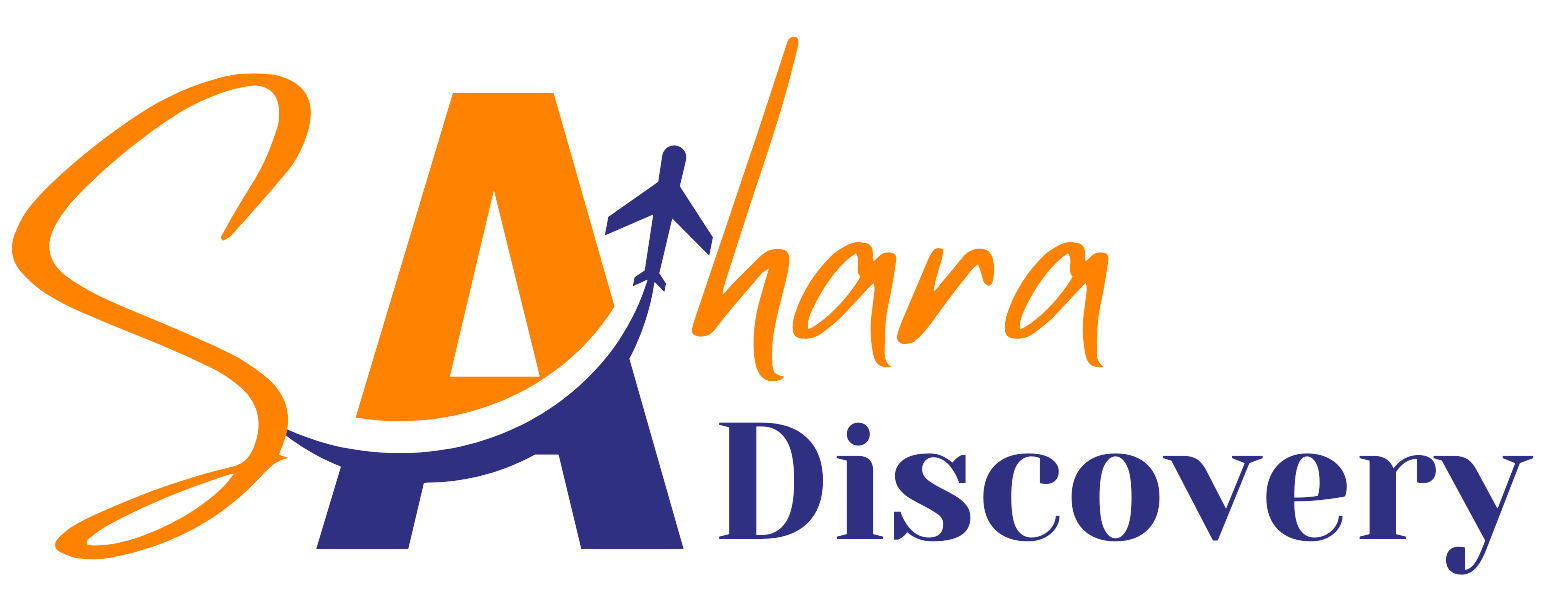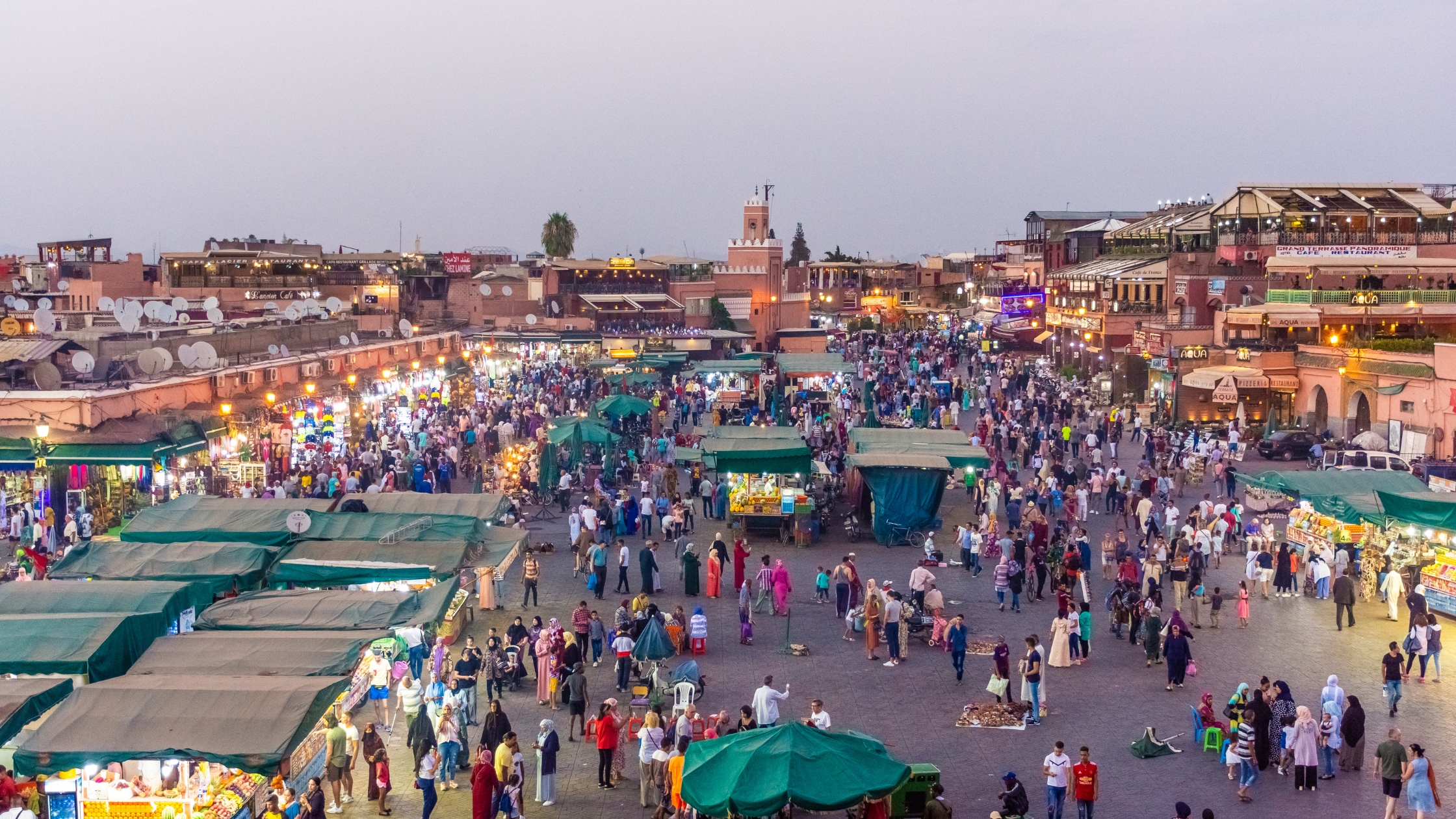The Ultimate Guide to Jemaa el-Fna Square: Marrakech’s Beating Heart
Jemaa el-Fna: More Than a Square, It’s the Heartbeat of Marrakech
As the sun begins its descent over the ochre buildings of Marrakech, Jemaa el-Fna Square transforms from a relatively calm open space into a pulsating theater of humanity. The tantalizing aromas of sizzling meats mingle with the sweet scent of freshly pressed orange juice. Rhythmic drumbeats and the hypnotic melodies of Gnaoua musicians rise above the cacophony of vendors calling out to passersby. This isn’t just a tourist attraction or a marketplace it’s the living, breathing soul of Marrakech, a cultural phenomenon that has remained vibrant for centuries.
Jemaa el-Fna Square (also spelled Djemaa el-Fna or Jamaa el Fna) stands as Morocco’s most iconic public space, where tradition and modernity dance together in a mesmerizing daily performance. Whether you’re planning your first visit or returning to rediscover its magic, this guide will take you deep into the heart of this UNESCO-recognized cultural treasure.
Understanding the Essence of Jemaa el-Fna
Situated at the entrance to Marrakech’s ancient medina, Jemaa el-Fna Square serves as both the geographical and cultural center of the city. The name itself has been subject to various interpretations over centuries some scholars suggest it means “Assembly of the Dead,” referring to public executions once held here, while others translate it as “Mosque of Nothing,” indicating a once-unfinished mosque.
Today, this sprawling plaza functions as Marrakech’s most important public gathering space, where locals and visitors alike converge to socialize, eat, shop, and be entertained. Unlike many historical sites that have become static museums, Jemaa el-Fna remains a living entity, constantly evolving while preserving centuries old traditions.
A Journey Through Time: The Definitive History of Jemaa el-Fna
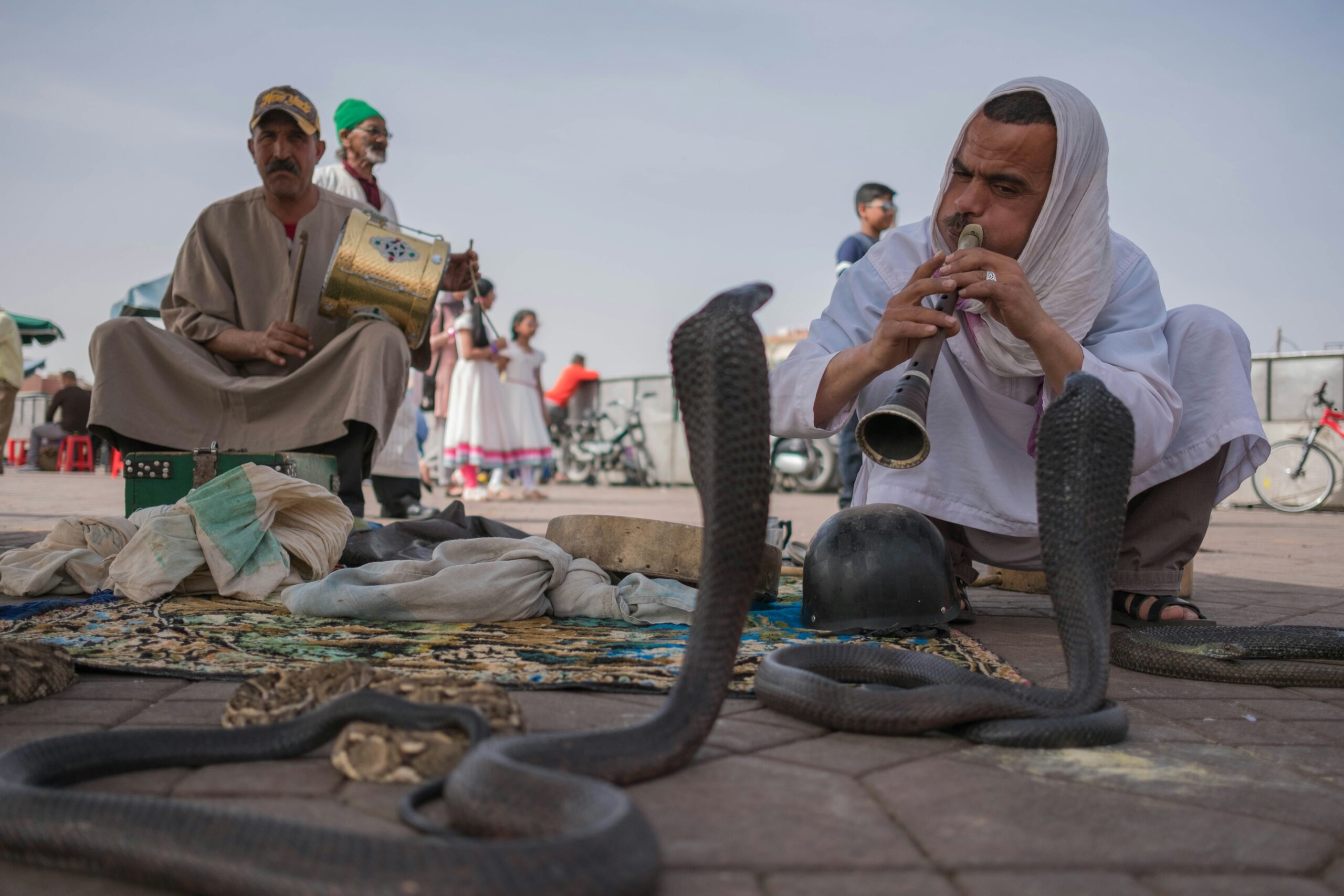
The origins of Jemaa el-Fna trace back to the founding of Marrakech by the Almoravid dynasty in the 11th century. Initially established as an execution ground and military parade area outside the royal kasbah, the square gradually evolved into a commercial and cultural hub.
During the Almohad period (12th-13th centuries), the square solidified its role as a central marketplace. The famous Koutoubia Mosque, whose minaret still dominates Marrakech’s skyline, was built adjacent to the square during this era.
Throughout the centuries, as Morocco passed through the hands of various dynasties Merinids, Saadians, and finally Alaouites Jemaa el-Fna maintained its significance. By the 19th century, it had become renowned for its storytellers, musicians, and performers, establishing the cultural traditions that continue today.
When French colonial powers established the modern ville nouvelle (new city) away from the medina in the early 20th century, Jemaa el-Fna became an even more potent symbol of Moroccan identity and tradition. This resilience against modernization and homogenization eventually led to its recognition by UNESCO in 2001 as a Masterpiece of the Oral and Intangible Heritage of Humanity.
UNESCO’s Intangible Cultural Heritage: The Soul of the Square
Unlike most UNESCO World Heritage sites, which protect physical monuments or natural landscapes, Jemaa el-Fna’s inscription celebrates something far more ephemeral the living cultural traditions that unfold daily in this space.
UNESCO recognized the square specifically for its role as “a unique concentration of traditional Moroccan cultural expressions in the form of musical, religious and artistic expressions.” The organization noted that Jemaa el-Fna represents “a remarkable example of a cultural space where a diversity of cultural exchanges has flourished over centuries.”
What makes this recognition so special is that it protects not just a physical location but the human activities that give it meaning:
- The ancient oral traditions of the storytellers (hikayat)
- The musical traditions of the Gnaoua and Amazigh performers
- The ritualized performances of snake charmers and water sellers
- The communal dining experience of the night market
- The social practice of public gathering and exchange
As UNESCO states, “The cultural space of Jemaa el-Fna Square is an outstanding example of a meeting point where rural traditions and urban influences converge, and where Morocco’s cultural diversity is fully expressed.”
The Spectacle Unveiled: A Comprehensive Guide to Experiences
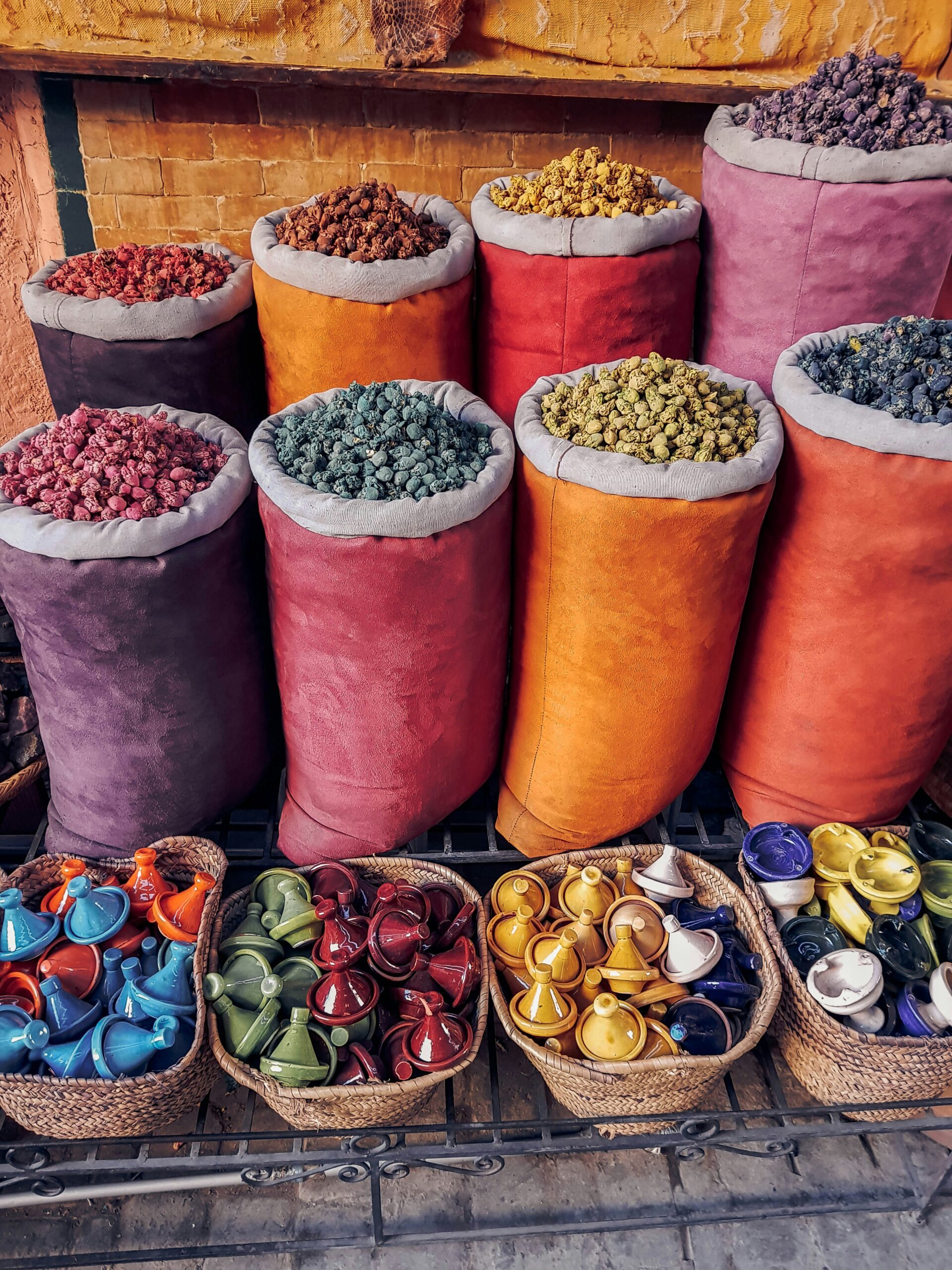
Day vs. Night: Two Faces of Jemaa el-Fna
| Daytime Jemaa el-Fna | Nighttime Jemaa el-Fna |
|---|---|
| Orange juice stalls dominate | Food stalls take center stage |
| Snake charmers and monkey handlers | Musicians and storytellers perform |
| Relatively spacious, easier navigation | Densely packed, electric atmosphere |
| Scorching heat (in summer) | Pleasant, cooler temperatures |
| Best for photography and observing details | Best for immersive cultural experience |
The Performers – Beyond the Surface
Storytellers (Hikayat)
Once the backbone of Moroccan oral tradition, the hikayat are increasingly rare treasures of Jemaa el-Fna. Speaking primarily in Darija (Moroccan Arabic) or Amazigh languages, these master narrators captivate circles of listeners with tales ranging from historical epics to moral fables.
The tradition dates back centuries, when storytelling served as both entertainment and a means of preserving cultural knowledge before widespread literacy. Today’s storytellers often incorporate contemporary references while maintaining traditional narrative structures, creating a living bridge between Morocco’s past and present.
Snake Charmers
Among the most photographed yet misunderstood performers in the square are the snake charmers. Sitting cross-legged with their cobra-filled baskets, these practitioners play the traditional ghaita (a reed instrument similar to an oboe) to seemingly hypnotize their serpents.
It’s worth noting that the snakes respond primarily to movement rather than sound, and many have had their venom glands removed. While controversial from an animal welfare perspective, the practice has deep cultural roots in Morocco, tied to the Aissawa Sufi brotherhood and their spiritual relationship with snakes.
Gnaoua Musicians
Dressed in distinctive colorful robes and tasseled hats, Gnaoua musicians represent one of Morocco’s most significant musical traditions. Their ancestors were brought from West Africa as slaves, bringing spiritual practices that blended with Islamic traditions to create a unique musical and religious expression.
The hypnotic sounds produced by their instruments particularly the three stringed guembri (bass lute) and metal qraqebs (castanets) induce trance-like states during traditional lila ceremonies. In Jemaa el-Fna, they offer shorter performances that still showcase the compelling rhythms of this spiritual music.
Water Sellers (Guerrab)
Perhaps the most photographed figures in Jemaa el-Fna are the guerrab traditional water sellers dressed in bright red robes and wide brimmed hats adorned with brass cups. These colorful characters carry goatskin water containers decorated with pompoms and tassels.
While historically they provided an essential service in the arid climate, today they primarily pose for photographs with tourists. Nevertheless, they represent an important cultural heritage dating back centuries, when water sellers were vital to urban life in Marrakech.
The Culinary Theatre: Navigating the Food Stalls
As evening falls, the northern side of Jemaa el-Fna transforms into one of the world’s most spectacular open-air dining experiences. Dozens of food stalls each identified by number set up quickly and efficiently, creating a sprawling communal restaurant under the stars.
What to Eat: Local Specialties
- Harira: A hearty tomato-based soup with lentils, chickpeas, and herbs, traditionally eaten to break the Ramadan fast
- Mechoui: Slow-roasted lamb, often cooked whole in underground ovens
- Tagines: Slow-cooked stews named after the conical earthenware pots they’re prepared in
- Snails (Babouche): Served in a fragrant broth with dozens of spices
- Merguez: Spicy lamb or beef sausages grilled over charcoal
- Sheep’s Head: For the adventurous eater, a traditional delicacy
- Fresh Orange Juice: An absolute must-try, pressed before your eyes
Tips for Choosing a Food Stall
- Observe the crowds: Stalls popular with locals (not just tourists) generally offer better quality
- Check cleanliness: Look for clean preparation areas and proper food storage
- Don’t be pressured: Overly aggressive touts might indicate subpar food that needs hard selling
- Negotiate prices: Ask about prices before ordering and be clear about portions
- Popular stalls: Numbers 1, 14, and 31 consistently receive positive reviews
Mastering Jemaa el-Fna: The Ultimate Practical Guide
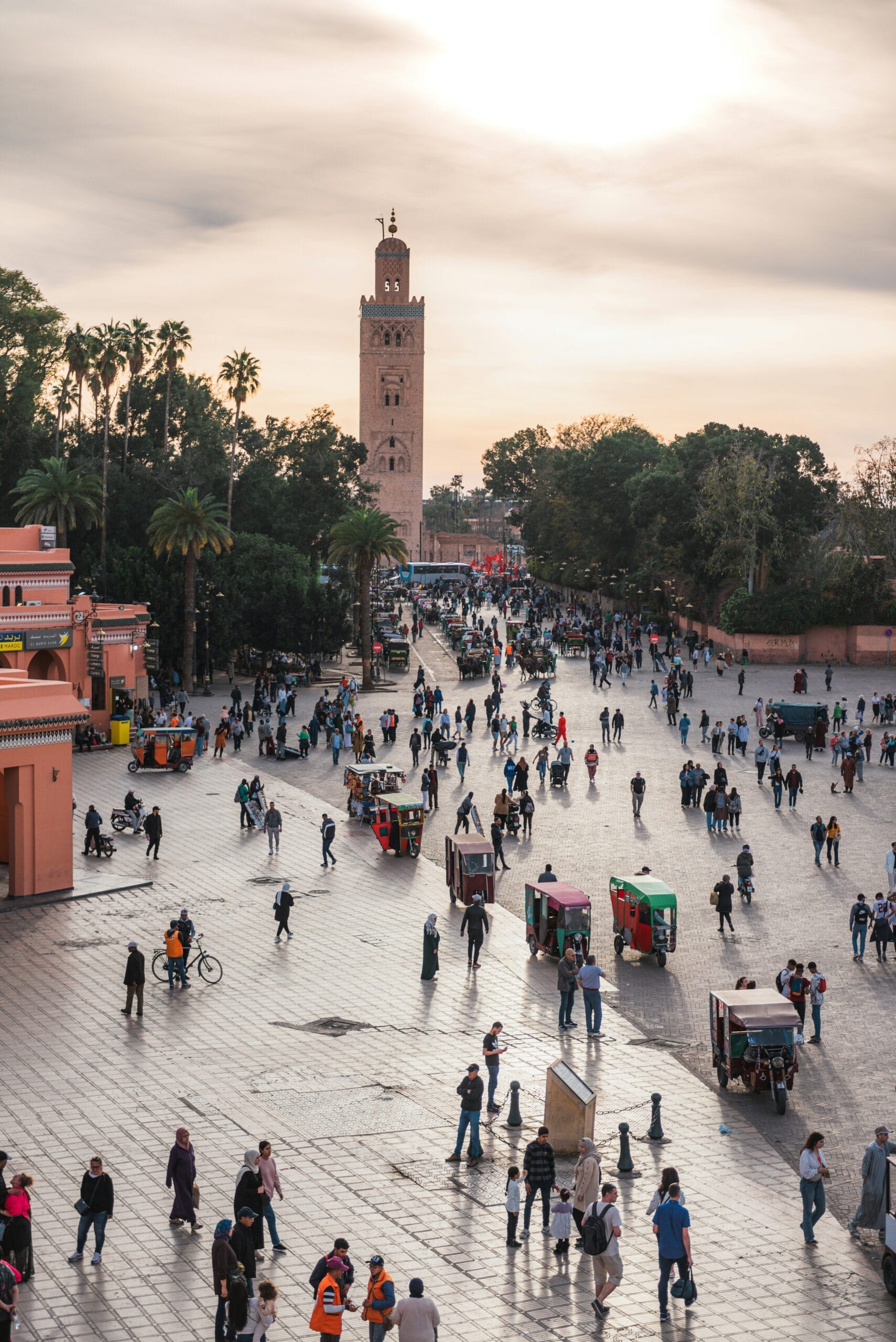
Best Times to Visit
- Early Morning (7-9 AM): For a peaceful experience with locals before tourist crowds arrive
- Late Afternoon (4-6 PM): To witness the magical transformation from day to night
- Evening (After 7 PM): For the full spectacle of food and entertainment
- Seasonally: Spring (March-May) and Fall (September-November) offer the most pleasant weather
Safety, Scams, and Etiquette
Like any major tourist attraction worldwide, Jemaa el-Fna requires vigilance and cultural sensitivity:
- Photography: Always ask permission before photographing performers, and expect to pay a small tip (5-10 dirhams)
- Common scams: Watch for “free” services that suddenly require payment, incorrect change giving, or switching products during purchase
- Pickpocketing: Keep valuables secure, especially during crowded evening hours
- Unwanted guides: Firmly but politely decline offers from unofficial guides
- Respectful dress: While not as conservative as other parts of Morocco, modest clothing shows cultural respect
Accessibility Considerations
Jemaa el-Fna presents challenges for travelers with mobility limitations. The square itself is flat but features uneven surfaces. Surrounding streets in the medina are often narrow and crowded. Consider these tips:
- Visit during morning hours when the square is less crowded
- Some riads and hotels on the square’s perimeter offer rooftop views that avoid the crowds entirely
- The cafés surrounding the square provide good vantage points with table service
Beyond the Bustle: Exploring the Periphery
Jemaa el-Fna serves as the perfect launching point for exploring Marrakech’s medina. Within walking distance you’ll find:
- Koutoubia Mosque: Morocco’s largest mosque, just a 5-minute walk southwest (non-Muslims cannot enter but can admire from outside)
- The Souks: Begin at the northern edge of the square for Morocco’s most famous markets
- Bahia Palace: A 15-minute walk southeast, showcasing exquisite Moroccan craftsmanship
- Maison de la Photographie: A 20-minute walk north, housing vintage photographs of Morocco
- Le Jardin Secret: A restored historic riad with beautiful Islamic gardens, 10 minutes north
Venturing Beyond Marrakech
While Jemaa el-Fna captivates many visitors for days, Morocco’s diverse landscapes beckon beyond the city walls. For those looking to explore further, Sahara Discovery has established itself as one of Marrakech’s premier tour operators. This locally owned company specializes in authentic Moroccan experiences ranging from single-day excursions to multi-day desert adventures.
Popular excursions from Jemaa el-Fna include:
- Atlas Mountains Day Trip: Escape the urban energy for Berber villages and stunning mountain vistas (returns same day)
- Essaouira Coastal Journey: Explore this charming blue-and-white fishing town and former Portuguese settlement (one day)
- Ouzoud Waterfalls Expedition: Witness North Africa’s most impressive cascades and resident Barbary macaques (one day)
- Sahara Desert Experience: The ultimate Moroccan adventure, traveling through Ait Benhaddou and Dades Valley to reach the majestic dunes of Erg Chebbi or Erg Chigaga (3-4 days)
What distinguishes Sahara Discovery is their commitment to cultural immersion many tours include meals with local families and encounters with artisans, providing context that enhances your understanding of the traditions you witness in Jemaa el-Fna. Their guides offer insightful commentary that connects the vibrant square’s performances and traditions to the broader cultural landscape you’ll experience beyond Marrakech.
FAQ
Is Jemaa el-Fna Square safe for tourists? Yes, the square is generally safe for tourists, especially during daylight hours. As with any crowded area, keep valuables secure and maintain awareness of your surroundings.
When is the best time to visit Jemaa el-Fna? For the full experience, visit late afternoon to witness the transformation from day to night. Around 4 PM, food stalls begin setting up, and by 7 PM, the square reaches its atmospheric peak.
How should I dress when visiting Jemaa el-Fna? Morocco is a Muslim country with conservative dress standards. While Marrakech is more relaxed than rural areas, respectful dress (covered shoulders, knees) is appreciated and may reduce unwanted attention.
Do I need to tip performers in Jemaa el-Fna? Yes, if you watch a performance or take photographs, a tip (5-10 dirhams) is expected. Have small bills ready for this purpose.
Can I book tours to other parts of Morocco from Jemaa el-Fna? Yes, many tour companies have representatives near the square. Sahara Discovery is a reputable local operator that offers everything from day trips to the Atlas Mountains to multi-day Sahara Desert expeditions. Booking through established companies helps ensure a quality experience.
Jemaa el-Fna Square isn’t just a destination it’s an experience that engages all your senses and offers a window into Morocco’s rich cultural heritage. By approaching this magical space with respect, curiosity, and a spirit of adventure, you’ll discover why it has captivated travelers for centuries. As the Moroccan saying goes, “You haven’t seen Marrakech until you’ve seen Jemaa el-Fna.”
